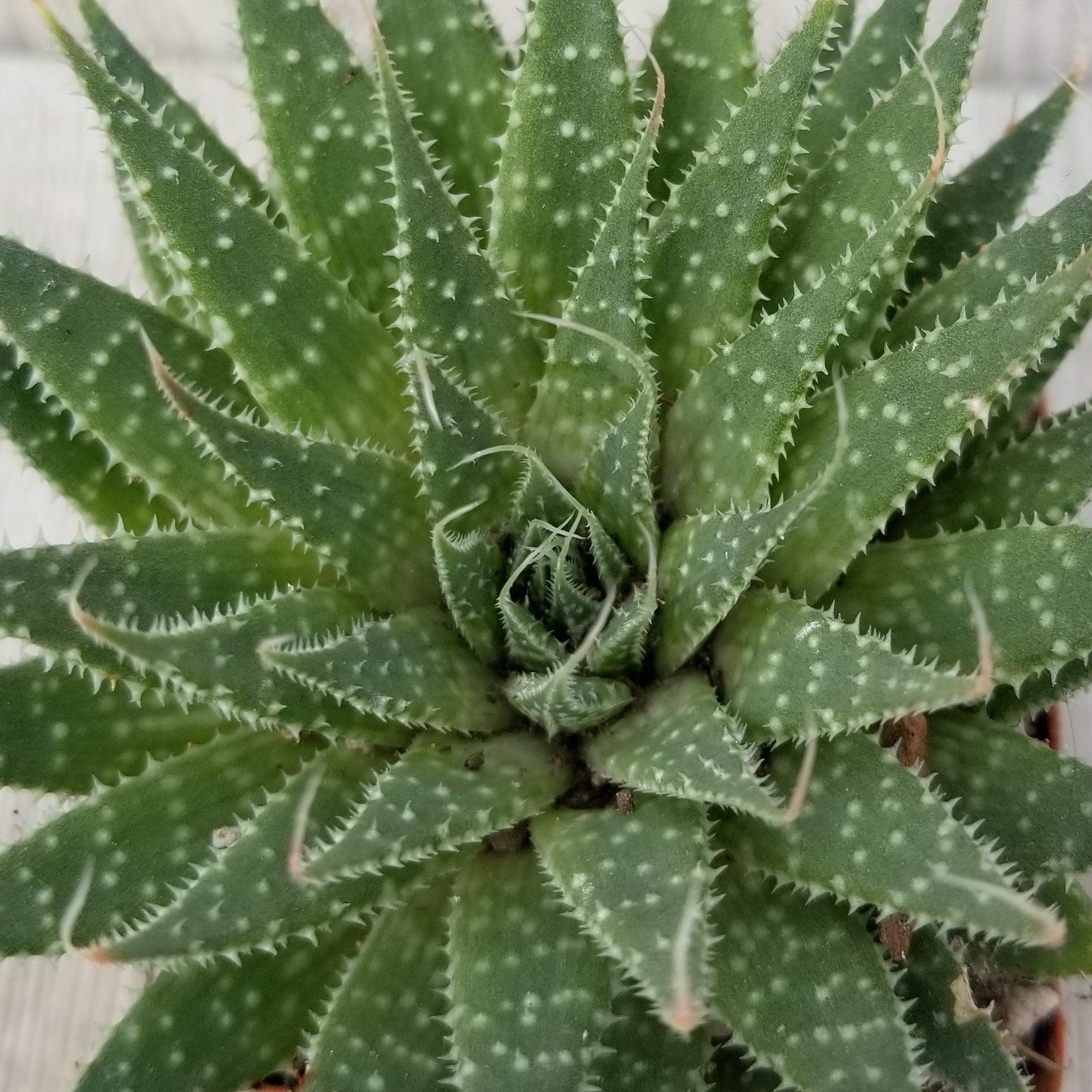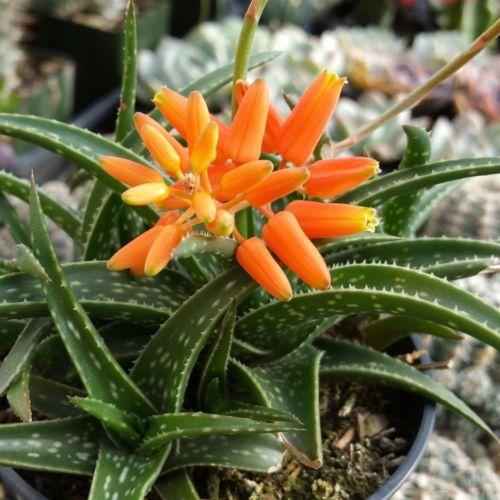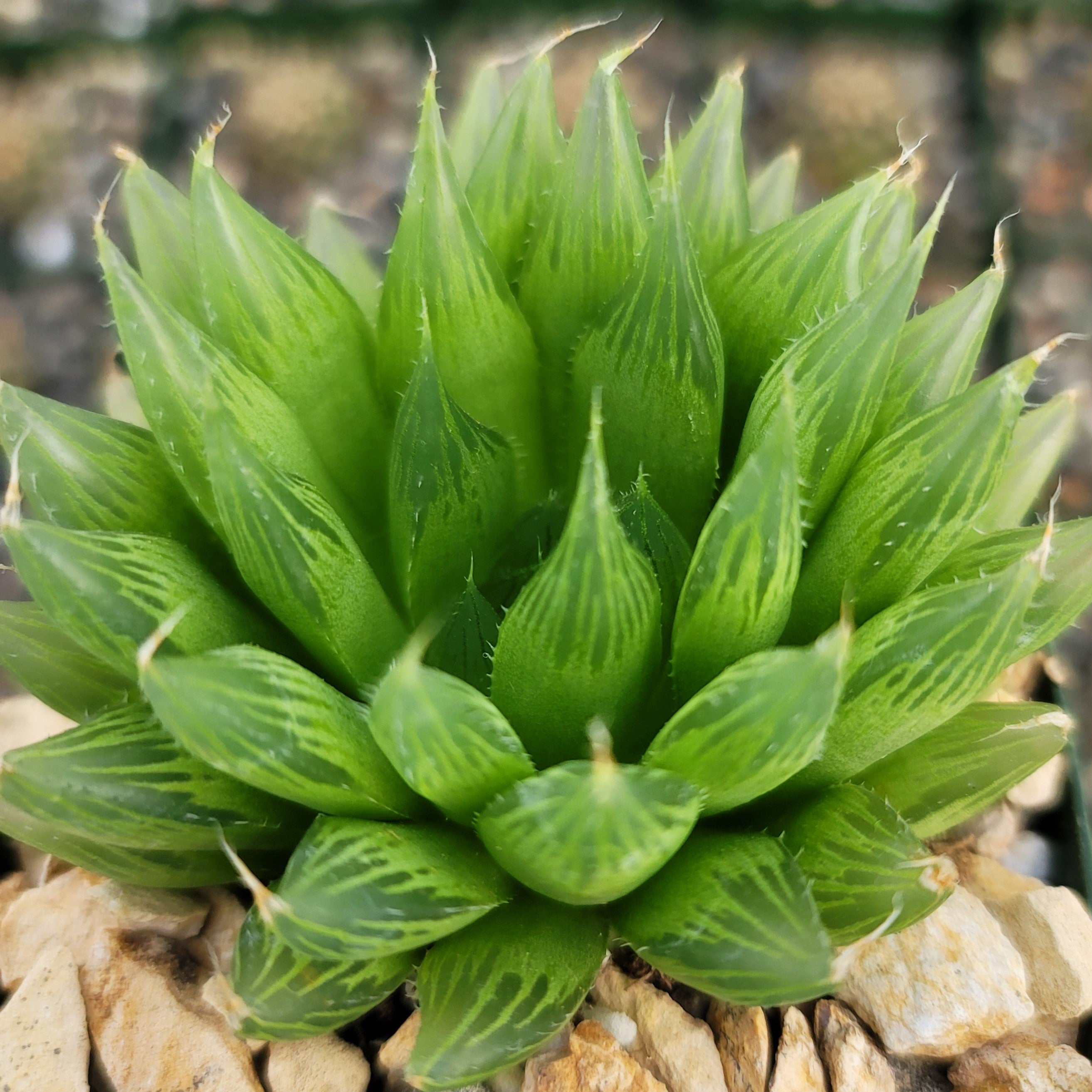Why it is Hard to Find a Real Christmas Cactus?
Updated: January 28, 2025

Mislabeling in nurseries and stores further adds to the confusion. We contacted over 15 wholesale nurseries to try and expand our collection of Christmas cacti at Planet Desert, but none of them had the real Christmas cactus.
Most Nurseries Actually Sell Thanksgiving cacti as Christmas cacti – Here's Why?
Most nurseries sell Thanksgiving cactus for Thanksgiving, Christmas, and for easter. They're able to do this by controlling the bloom of the cactus. By adjusting the lighting and temperature, nurseries can manipulate the blooming of the Thanksgiving cactus to coincide with these holidays.
During the Thanksgiving season, nurseries sell these beautiful Thanksgiving cacti. They are known for their vibrant blooms and are a popular choice for adding a festive touch to Thanksgiving decorations. People love to display these cacti as a centerpiece or as part of their holiday decor. Nurseries make sure to have plenty of Thanksgiving cacti available for this specific holiday.
When it comes to Christmas season, Nurseries are quite clever in manipulating the bloom of the Thanksgiving cactus to coincide with Christmas. The growers adjust both the lighting and temperature conditions. They gradually reduce the amount of light the cactus receives during the day, simulating the shorter days of winter. Additionally, they expose the cactus to cooler temperatures, usually around 50-55°F, during the night. This combination of reduced light and cooler temperatures signals the cactus to enter its blooming phase, resulting in those beautiful flowers just in time for the holiday spirit!
Just like with Christmas, for easter cactus nurseries can manipulate the bloom of the Thanksgiving cactus to make it available for Easter season. By adjusting the environmental conditions, they ensure that the Thanksgiving cactus is in full bloom during this springtime holiday.
So, by manipulating the lighting and temperature conditions, growers can make different types of cacti bloom at specific times of the year, like Thanksgiving and Christmas.
Differentiating Christmas cactus from other Holiday Cacti

1
Christmas Cactus - Schlumbergera bridgesii
BUY AT PLANET DESERTkeypoints:
- USDA Hardiness Zones:10,11,12
- Color varieties:Pink, red, orange, white, purple
- Blooming Period: Fall - Winter
- Shape:Smooth - Scalloped stem segments
The Christmas cactus, scientifically known as Schlumbergera bridgesii, is characterized by its flattened smooth, and scalloped stem segments and its tendency to bloom around the Christmas season. Its leaves are shorter and wider than other holiday cacti. Christmas cacti flowers are typically tubular, hang down like a pendant and come in pink, red, and white hue. The Christmas Cactus plant is more brittle than the Thanksgiving Cactus, making shipping more challenging. Its anthers are purple or brown. This cactus Christmas is native to the tropical rainforest of Brazil and South America and is known for its ability to adapt to indoor environments.
Here at Planet Desert, you can learn more about the true Christmas cactus in our article which discusses fascinating facts that you might find useful; and you can also buy true Christmas cactus for sale!

2
Thanksgiving cactus - Schlumbergera truncata
BUY AT PLANET DESERTkeypoints:
- USDA Hardiness Zones: 10,11,12
- Color varieties:Pink, red, orange, white
- Blooming Period: Fall
- Shape:More Pronounced - Pointed stem segments
The Thanksgiving cactus, also known as Schlumbergera truncata, has pointed leaf segments and typically blooms around the Thanksgiving holiday. This is the holiday plant that is most likely to be sold as a "Christmas Cactus" around the holidays. Unlike the “real” Christmas cactus, which has scalloped leaves, these holiday cactus plants are distinguished from their close relatives by having pointy leaves, or “hooks." Unlike the Christmas Cactus, which has more pendulous branches, their branches arch upward before hanging down. With yellow anthers, the thanksgiving cactus flowers are arranged horizontally. Its flowers have a more star-like appearance and come in shades of pink, purple, and white. This Thanksgiving cactus is native to the coastal mountains of Brazil and prefers slightly cooler temperatures compared to the Christmas cactus. Schlumbergera x buckleyi, a hybrid species, is probably the one that is sold commercially.

3
Easter Cactus - Rhipsalidopsis gaertneri
BUY AT PLANET DESERTkeypoints:
- USDA Hardiness Zones: 10,11,12
- Color varieties:Pink, red, orange, white
- Blooming Period: Fall
- Shape:More Pronounced - rounded stem segment
The Easter cactus, scientifically known as Rhipsalidopsis gaertneri, is another holiday cactus that blooms around the Easter season. Although native to Brazil, these cacti live in dry forests, whereas the Thanksgiving and Christmas cacti grow in tropical rainforests. Their leaves have scalloped edges, and the tips of the stems will have tiny bristles. Unlike the Thanksgiving and Christmas cacti, which bloom in the fall, the starburst-shaped flowers will emerge in the spring between March and May. Additionally, they are more prone to over- or under-watering. After 8–12 weeks of short days (12–14 hours of darkness) at 50°F, they develop flower buds.
Planet Desert's article on holiday cacti, Christmas vs. Thanksgiving vs. Easter Cactus can help clarify misconceptions about their similarities and differences, enabling you to identify the appropriate holiday plant for your needs.
Where to Buy a True Christmas Cactus?
If you're interested in obtaining a true Christmas cactus; ask your friends, family, coworkers if they have the real Christmas cactus and if so ask if they can give you a stem cutting.
Additionally, to obtain a true Christmas cactus, ask for cuttings from someone who already has one and start your own. Local businesses are often willing to share cuttings, and people are usually happy to share plants. Finding cuttings locally is ideal, as they don't have to travel through the postal system. However, online purchases may not survive the trip because of factors like cold weather or mishandling. It's worth the detective work to find someone locally with Schlumbergera bridgesii.
Pro Tip
Before purchasing, carefully read the description and photos, as Thanksgiving cactus segments have toothed edges, while true Christmas cactus segments are rounded without teeth.
True Christmas Cactus Cuttings: How to Grow & Care for Them?

Regarding propagating the Christmas cactus from cuttings, it is indeed a popular method. If you already have access to a Christmas cactus, you can take cuttings from Christmas cactus and propagate them to grow your own new Christmas plants. This can be a cost-effective way to expand your collection.
To propagate Christmas cacti, take stem cuttings of about 3-4 segments long. Allow the cuttings to dry and callus over for a day or two.
Then, plant the cuttings in a small pot filled with moist, well-draining soil. Place the pot in a warm, bright location, and mist the cuttings occasionally to provide humidity.
Once you have your Christmas cactus cuttings, you'll want to determine Christmas cactus rootings; if they are rooted or unrooted. Rooted cuttings have developed roots, while unrooted cuttings do not have roots yet. To root unrooted cuttings, use water propagation or soil propagation, both self-explanatory methods, which are two methods for achieving this process. Here is the step-by-step care to grow your collection.
For water propagation – When it comes to propagating Christmas cactus in water, fill a glass or jar with water and place the unrooted cuttings in it. Make sure that at least one or two segments are submerged in the water. Keep the jar in a warm and bright location, away from direct sunlight. Change the water every few days to prevent it from becoming stagnant. After a few weeks, you should start to see roots forming. Once the roots are about 2-3 inches long, you can transfer the cuttings to a pot with well-draining soil.
For soil propagation - You can directly plant the unrooted cuttings into a small pot filled with moist, well-draining soil. Insert the cuttings about an inch deep into the soil, ensuring that at least one or two segments are buried. Place the pot in a warm and bright location but avoid direct sunlight. Keep the soil lightly moist, and not overly wet, and mist the cuttings occasionally to provide humidity. After three weeks, gently pull on one segment to feel the root 'grab', which is ready to be repotted. If the cutting is easily removed without roots, give it another few weeks and try again.
General Care Guidelines to Grow Your True Christmas Cactus Cuttings

Light: Christmas cacti thrive in bright, indirect light. They prefer a few hours of morning bright light but be careful not to expose them to direct afternoon sun, as it can scorch their leaves.
Water: It's important to keep the soil slightly moist, but not overly wet. Allow the top inch of soil to dry out between waterings. During the growing season, water more frequently, and reduce watering during the dormant period.
Soil: Use a well-draining soil mix specifically formulated for epiphytic cacti. You can also create your mix by combining potting soil, perlite, and coarse sand in equal parts. Instead, make or buy a well-draining potting mix, or ideally use our specialized cactus potting mix that contains 5 natural substrates and mycorrhizae to promote the development of a strong root system that helps your winter cactus to thrive.
Fertilizers: During the active growing season, you can fertilize them once a year in the spring with a balanced 5-10-5 NPK fertilizers. Just remember to reduce or stop fertilizing during their dormant period.
Temperature: Christmas cacti thrive in temperatures between 60°F and 70°F, mimicking their tropical habitat. They thrive in USDA zones 10–12, which have mild winters and warm temperatures. If you live in a colder region, you can grow Christmas cactuses indoors in a humid environment or in containers that can be brought indoors during the colder months. This allows for healthy growth and blooming.
Blooming: Christmas cacti require a period of cool temperatures (around 50-55°F) and reduced daylight hours to encourage blooming. About 6-8 weeks before you want them to bloom, expose the plants to temperatures around 50-55°F and limit their exposure to light for 12-14 hours per day. This can be achieved by placing them in a dark room or covering them with a lightproof cloth or box.
By following these guidelines, you'll be on your way to growing and caring for beautiful Christmas cactus cuttings. Remember, it may take some time and patience, but the reward of seeing them bloom is totally worth it!
The Bottom Line
Overall, finding a real Christmas cactus can be a bit tricky because different types of holiday cacti are often mislabeled as Christmas cacti. The true Christmas cactus, scientifically known as Schlumbergera bridgesii, has distinct characteristics like scalloped stems and flowers that hang down. However, other holiday cacti like the Thanksgiving cactus or the Easter cactus are often mistakenly sold as Christmas cacti because they look similar and bloom around the same time. To ensure you're getting a genuine Christmas cactus, it's best to buy from a reputable seller or nursery that can provide accurate information about the plant's species and are selling cuttings.
Frequently Asked Questions
No, true Christmas cacti are not necessarily rare. However, they can be a bit harder to find compared to other types of cacti. The confusion arises because other cacti like the Thanksgiving cactus or the Easter cactus are often mistaken for Christmas cacti. So, while they may not be extremely rare, it's important to make sure you're getting the right one when purchasing a Christmas cactus.
A true Christmas cactus (Schlumbergera bridgesii) has distinct characteristics that set it apart from other holiday cacti. It has flattened scalloped stems and its flowers hang down from the stems. The flowers are usually vibrant and come in various colors like pink, red, white, or purple. The foliage is typically green and segmented. So, if you see a holiday cactus with these features, you're likely looking at a true Christmas cactus!
The true Christmas cactus, scientifically known as Schlumbergera bridgesii, has flattened scalloped stems and flowers that hang down. False Christmas cacti, like the Thanksgiving cactus or the Easter cactus, may look similar but have some differences. The Thanksgiving cactus has pointed and toothed stem segments, while the Easter cactus has more rounded stem segments.
Additionally, the blooming time can also help distinguish them, as the true Christmas cactus typically blooms around December. It's always a good idea to consult with a knowledgeable plant expert or refer to reputable sources to ensure you're getting the right type of cactus.
No, a Christmas cactus is not an actual cactus in the traditional sense. It is an epiphytic succulent plant that belongs to the Schlumbergera genus. While it may look similar to a cactus, it doesn't have the typical spines or prickly appearance. However, like other cacti, it has adapted to survive in dry conditions by storing water in its stems and leaves. It has flattened stems and beautiful flowers that bloom around the holiday season.























